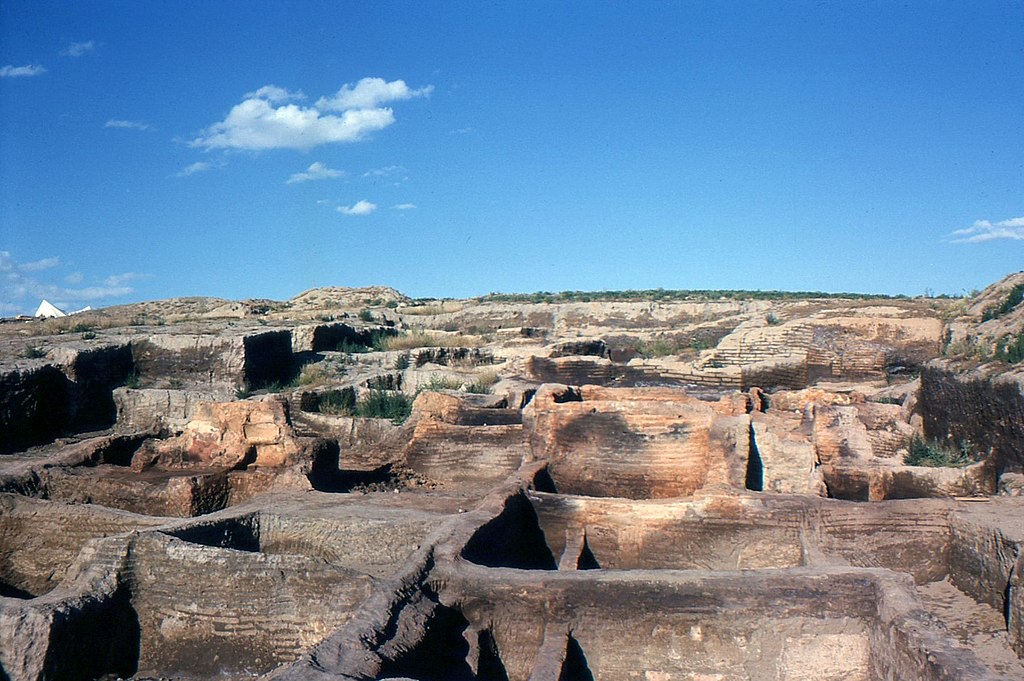
A second quarter containing Neolithic-era homes was found during the most recent excavations carried out at Catalhoyuk, the renowned archaeological site located in what is today Turkey’s Çumra district in the province of Konya.
The site is near the ancient site of Iconium, what was once the Greek city of Ikonion.
One of the most prominent cultural heritage sites on the UNESCO World Heritage List, Catalhoyuk, located in Asia Minor, is widely recognized as one of the oldest settlements of ancient humanity.
After its discovery by British archaeologist James Mellaart in the 1960s, Catalhoyuk was excavated by Stanford University Professor of archaeology Ian Hodder beginning in 1993.
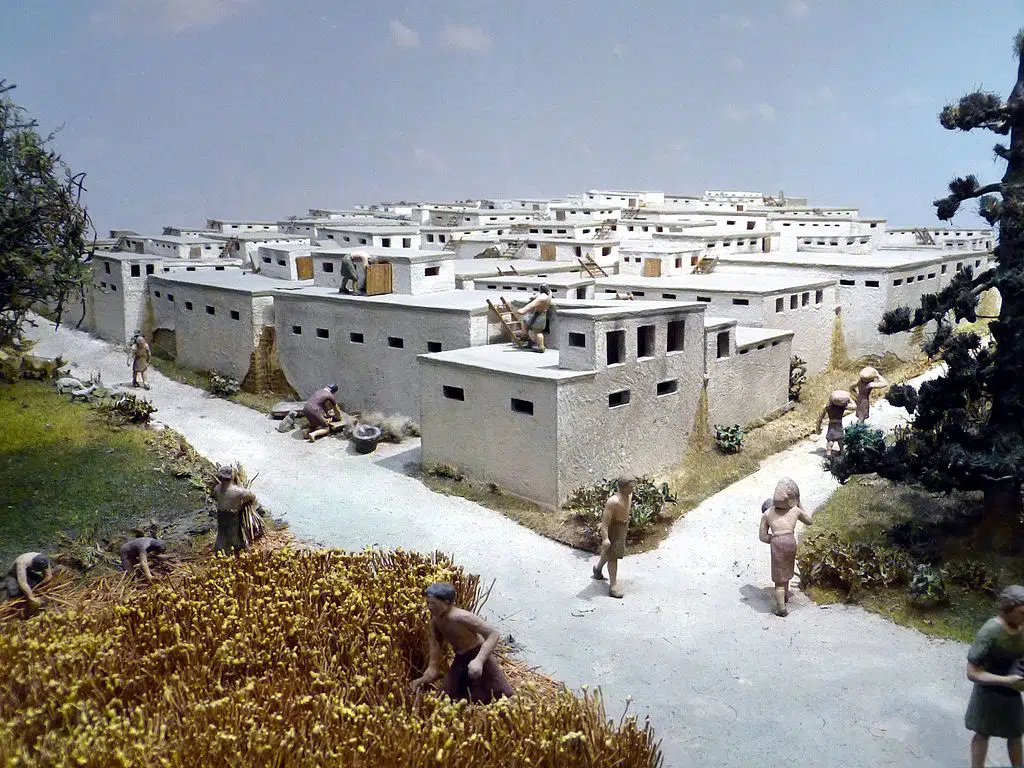
The region, which has been inhabited since the 3rd millennium BC — five thousand years before the present — was occupied over time by the Hittites, Phrygians, Persians, Hellenes and Romans.
Known as Ikonion and then Iconium during classical antiquity, it was conquered by the Seljuk Turks in the 11th century, lording their power over the Rûm (Byzantine Greek) inhabitants. They made what they called Konya the capital of their new “Sultanate of Rum.”
Now included on UNESCO’s list of World Heritage sites, in the beginning, it was a large Neolithic and Chalcolithic “proto-city” settlement in southern Anatolia, which flourished from approximately 7,100 BC to 5,700 BC.
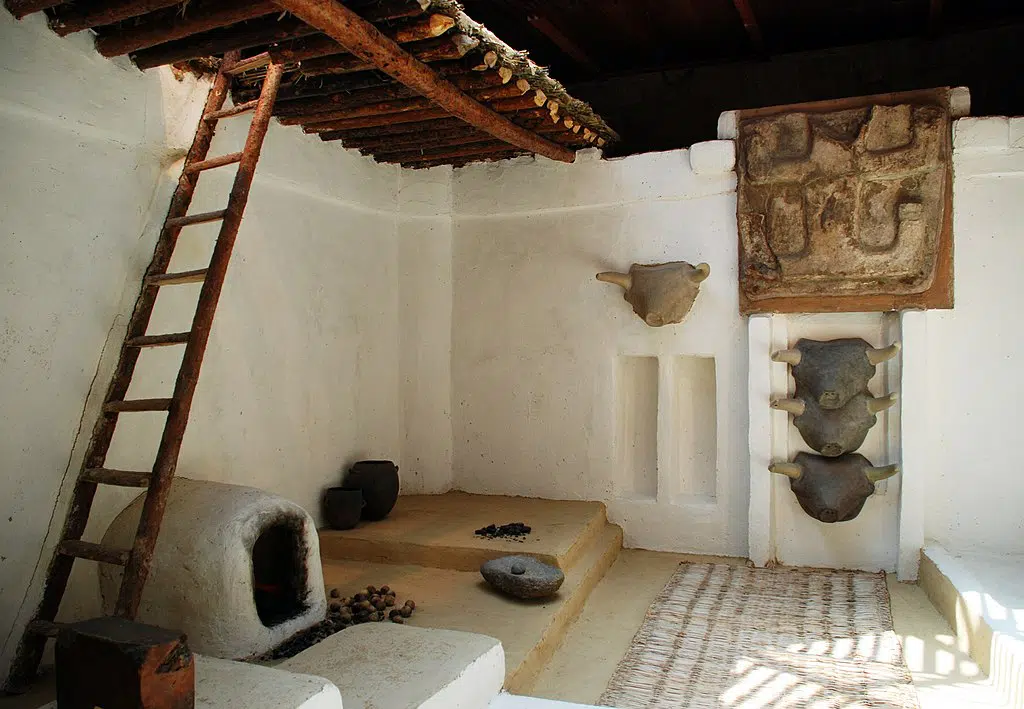
Catalhoyuk overlooks the Konya Plain, southeast of the present-day city of Konya, with the Byzantine settlement of Ikonion located a few hundred meters to the east. The prehistoric mound settlements found there had been abandoned before the Bronze Age.
The site was first excavated by James Mellaart in 1958. He later led a team which further excavated there for four seasons between 1961 and 1965, showing that this section of Anatolia was a center of advanced culture during the Neolithic period. There are a staggering 18 successive layers of buildings signifying various stages of the village and the eras of history through which it lived.
With the bottom layer of buildings dating back to as early as 7100 BC, the top layer is from 5,600 BC. Its inhabitants lived in mudbrick houses that were built together in an aggregate structure, as if for protection.
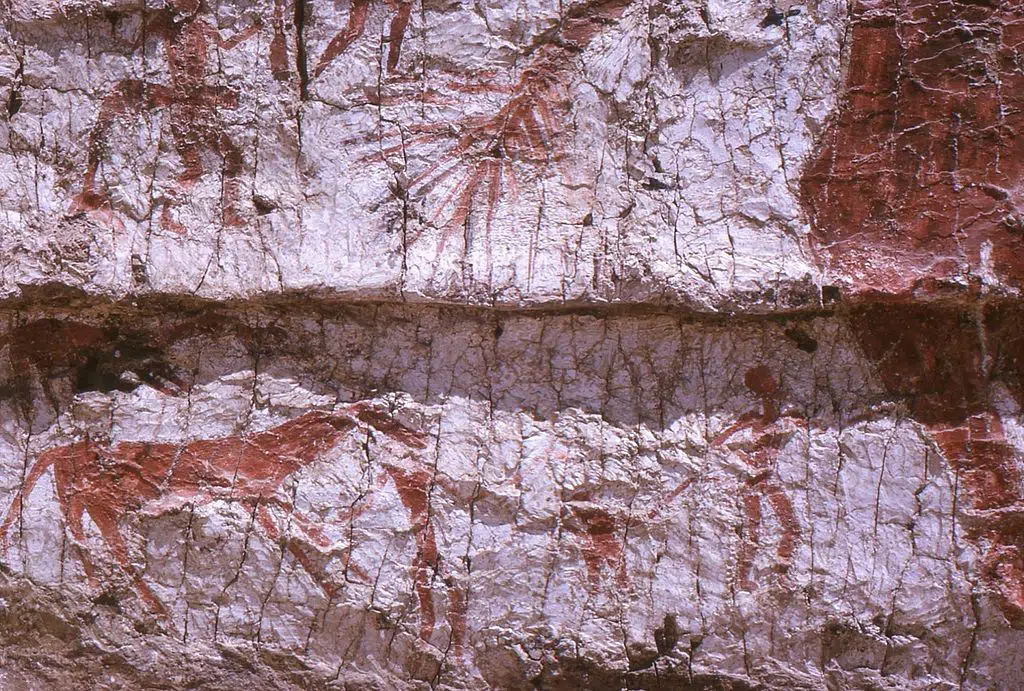
Until now, archaeologists had unearthed no streets, or even footpaths, between the dwellings, which were clustered around each other in a dizzying, honeycomb-like maze. Most were accessible only by holes in the ceiling and doors on the side of the houses, with their doors reached only by ladders and stairs.
Researchers believed that the rooftops of the buildings may have served as streets. The openings in the ceilings also served as the only source of ventilation, allowing smoke from the houses’ open hearths and ovens to escape.
Now, Associate Professor Ali Umut Türkcan recently told the Anadolu Agency that he and his researchers have discovered a street structure in the newly excavated area; this would be the first such street to be found there.
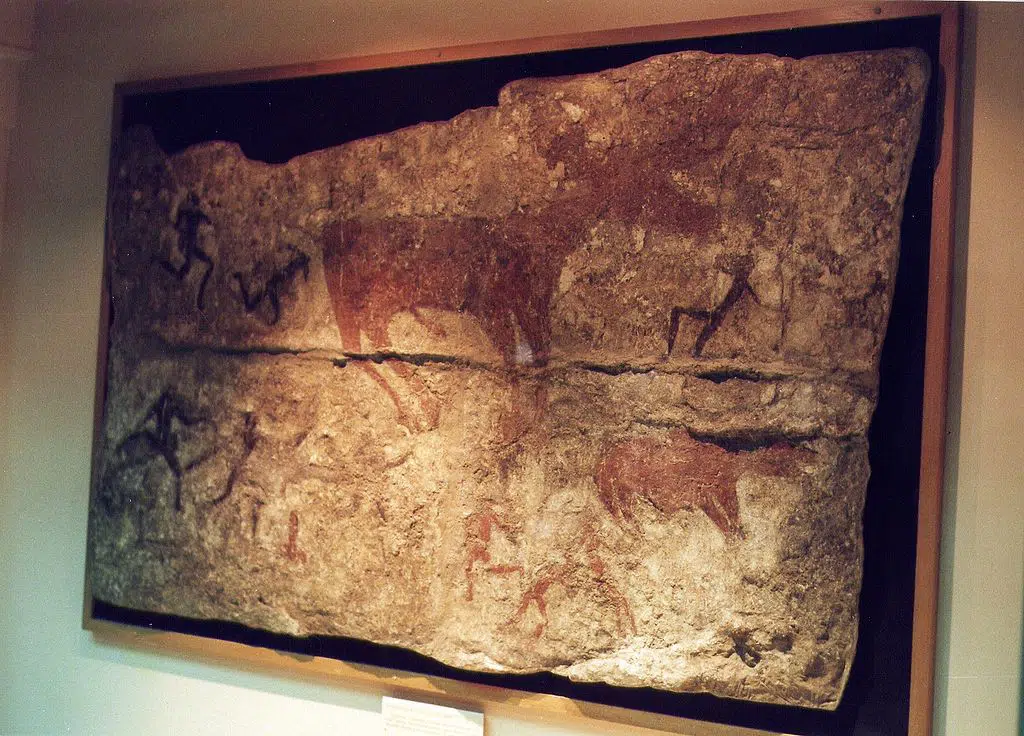
Türkcan added they have excavated just six percent of the important Neolithic site so far.
The homes there all had plaster interiors, with squared-off timber ladders or steep stairs. These were usually located on the south wall of the room, along with cooking hearths and ovens. The main rooms of the domiciles contained raised platforms that may have been used for myriad household activities.
Typical homes in Çatalhöyük featured two rooms for everyday activities, such as cooking and making household implements and other necessities. All the interior walls and platforms were plastered to a smooth finish, and all their rooms were kept scrupulously clean, leading researchers to understand these peoples were in an advanced state of social and technical development for that time.
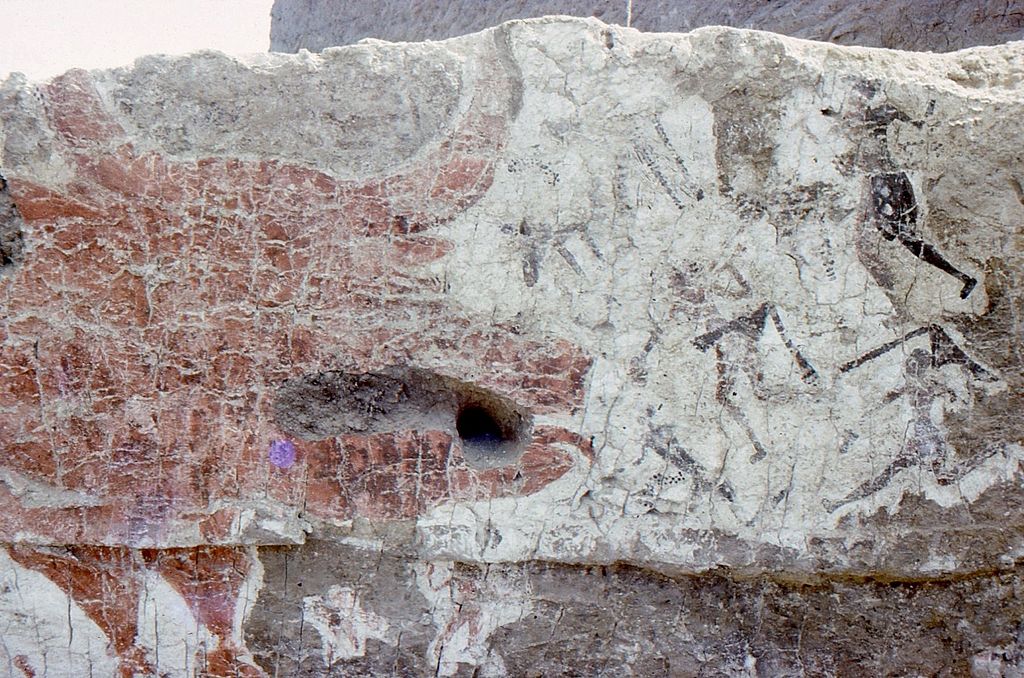
Archaeologists over the years have found very little refuse in the buildings, while middens outside the ruins contained both sewage and food waste, as well as ash from burned wood, reeds and animal dung.
Researchers believe that in good weather, many daily activities may also have taken place on the rooftops, which may have formed a kind of a plaza where the townspeople could meet and interact.
In later times, large communal ovens seem to have been built on the rooftops. As many as eighteen levels of villages, each built on the ruins of previous structures, have been uncovered.
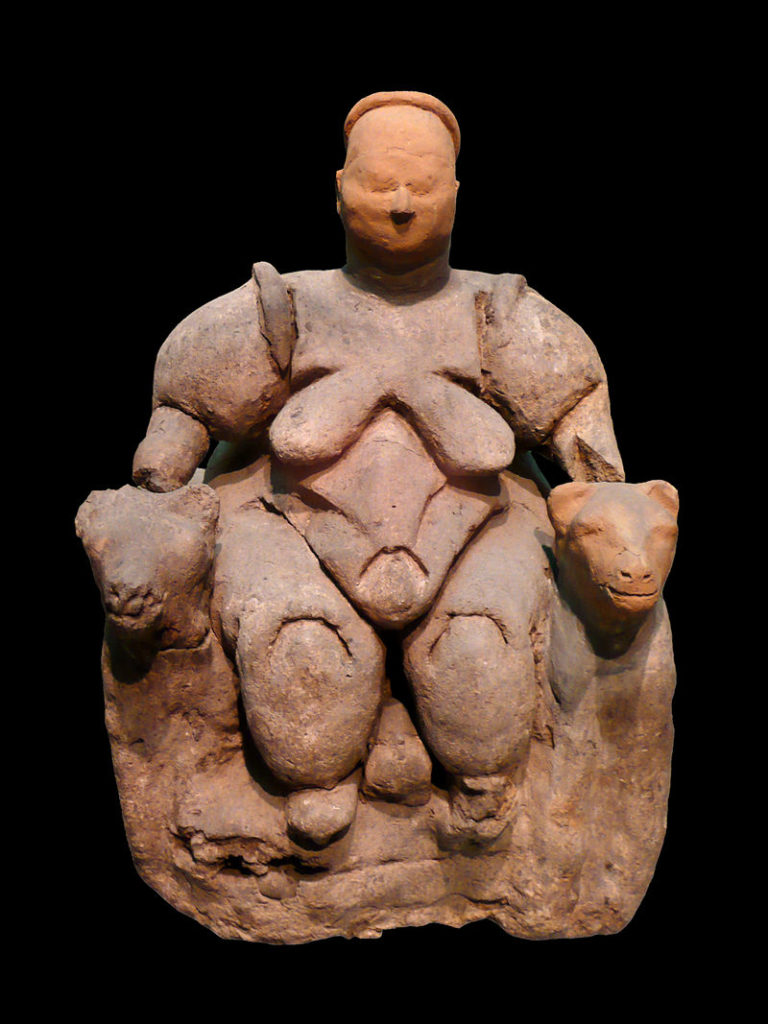
Lifelike murals and figurines have also been found throughout the village, on both interior and exterior walls. Striking clay figurines depicting women, perhaps most notably the “Seated Woman of Çatalhöyük,” have been found in the upper levels of the site.
Although it is impossible to say anything definitive regarding the religion of these village dwellers, the graves, murals, and figurines discovered there suggest that the people of Çatalhöyük had a belief system embodied in these symbols.
Archaeologists have discovered that some rooms have concentrations of these totemic items, meaning that they may have been shrines or areas where the public would meet together.
Human fertility images, hunting scenes, and red-colored images of the now-extinct auroch, a type of bovine, as well as and stags are depicted in their artworks. Some images even show vultures, swooping down on headless figures.
Other figures, shown in relief, are carved on walls, such as of lionesses facing one another.
One extraordinary painting of the village of Çatalhöyük, showing the nearby twin volcanic peaks of Hasan Dağ in the background, is thought by some researchers to represent the world’s oldest map.
Excavations at this extraordinarily important archaeological site are ongoing.
See all the latest news from Greece and the world at Greekreporter.com. Contact our newsroom to report an update or send your story, photos and videos. Follow GR on Google News and subscribe here to our daily email!



